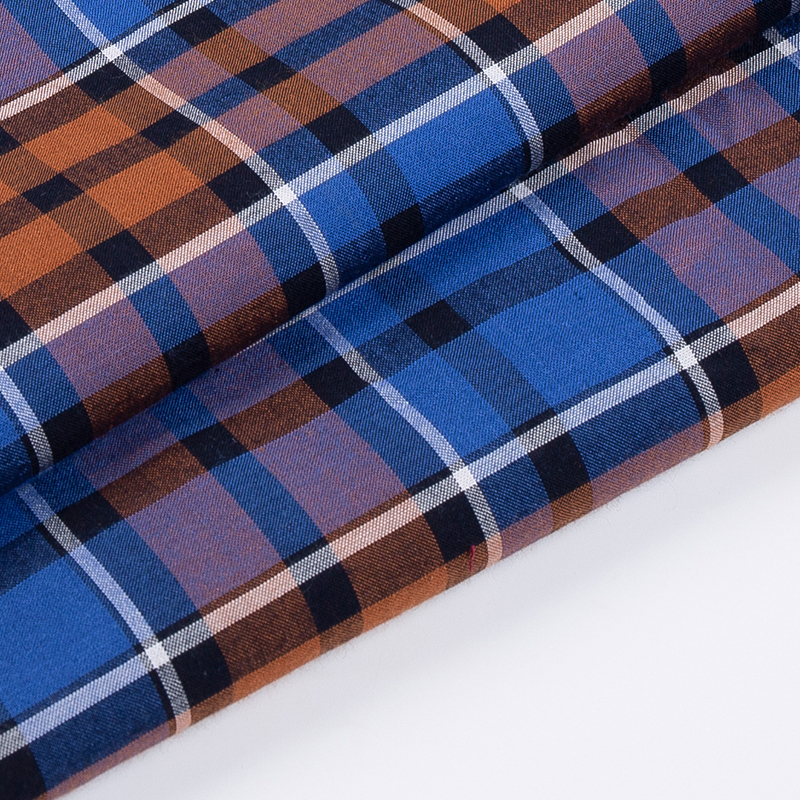The Fast Fashion Dilemma: Convenience vs. Conscience
Fast fashion thrives on affordability, accessibility, and rapid turnover of styles—qualities that yarn-dyed rayon fabric embodies perfectly. Its soft texture, vibrant color retention, and cost-effectiveness make it a favorite among brands churning out trendy collections at breakneck speed. However, this convenience comes with ethical concerns. The environmental impact of traditional viscose production, including deforestation and chemical pollution, has sparked criticism from sustainability advocates.
For fast fashion brands using rayon-based textiles, the challenge lies in balancing profitability with responsibility. Some companies are addressing this by adopting eco-friendly alternatives like EcoVero or Tencel, which are derived from sustainably sourced wood pulp and manufactured through cleaner processes. These innovations allow brands to maintain the appeal of rayon’s luxurious drape and vibrant hues while aligning with growing consumer demand for greener practices. Still, critics argue that even “sustainable” Yarn Dyed Rayon Fabric may struggle to shake off their association with disposable fashion unless brands commit to longer-lasting designs and transparent supply chains.
Slow Fashion’s Embrace: Premium Rayon for Conscious Consumers
On the flip side, slow fashion champions quality over quantity, emphasizing timeless designs, ethical production, and durable materials. Here, too, yarn dyed rayon finds its place—but in a very different form. High-end designers are increasingly turning to premium versions of rayon, such as lyocell or modal, which boast superior softness, breathability, and eco-friendly credentials. These fabrics are often blended with natural fibers like organic cotton or linen to create garments that feel indulgent yet remain planet-friendly.
For slow fashion enthusiasts, the allure of rayon lies in its ability to combine aesthetics with sustainability. A beautifully crafted dress made from responsibly sourced rayon can last for years, offering a level of versatility unmatched by cheaper synthetics. Moreover, certifications like FSC (Forest Stewardship Council) and OEKO-TEX® Standard 100 provide assurance that the fabric meets rigorous environmental and safety standards. This transparency resonates deeply with conscious consumers who want to know exactly where—and how—their clothes are made.
Regional Preferences: A Tale of Two Markets
Consumer attitudes toward rayon fabrics vary significantly across regions, reflecting broader cultural and economic differences. In Western markets like Europe and North America, there’s a noticeable shift toward sustainable textiles. Shoppers here are willing to pay a premium for ethically produced garments, making premium rayon blends highly desirable. Brands targeting these audiences often highlight their use of eco-viscose or biodegradable rayon as a key selling point, tapping into the growing slow fashion movement.

In contrast, emerging markets in Southeast Asia, Africa, and South America tend to prioritize affordability and practicality. Here, traditional yarn-dyed rayon remains popular due to its low cost and versatility. It’s commonly used in everyday wear, home textiles, and even industrial applications. While sustainability is gaining traction in these regions, price sensitivity still dominates purchasing decisions. As a result, manufacturers must strike a delicate balance between offering affordable options and gradually introducing more eco-friendly alternatives.
The Bigger Picture: Adapting to Changing Consumer Values
Ultimately, the success of yarn-dyed rayon fabric hinges on its ability to adapt to shifting consumer values. Whether it’s meeting the demands of fast fashion’s relentless pace or satisfying slow fashion’s call for sustainability, this material continues to evolve. Innovations in production methods, such as closed-loop systems and bio-based solvents, are paving the way for a more responsible future. Meanwhile, increased awareness about the origins and impacts of textiles is pushing both brands and buyers to think critically about their choices.
As we look ahead, one thing is clear: yarn-dyed rayon will remain a staple in the global textile industry. Its ability to straddle the line between luxury and accessibility makes it uniquely suited to meet diverse needs. By embracing innovation and prioritizing sustainability, the industry can ensure that this beloved fabric continues to thrive—not just as a trend but as a testament to thoughtful design and responsible consumption. After all, in a world that’s constantly changing, the fabrics we choose say a lot about who we are—and who we aspire to be.



 English
English Español
Español Feb 24,2025
Feb 24,2025














 +86-519-86503571
+86-519-86503571
 Phone: +86-13218666905
Phone: +86-13218666905 Tel: +86-0519-86503571
Tel: +86-0519-86503571 Fax: +86-0519-86508551
Fax: +86-0519-86508551 E-mail:
E-mail: 